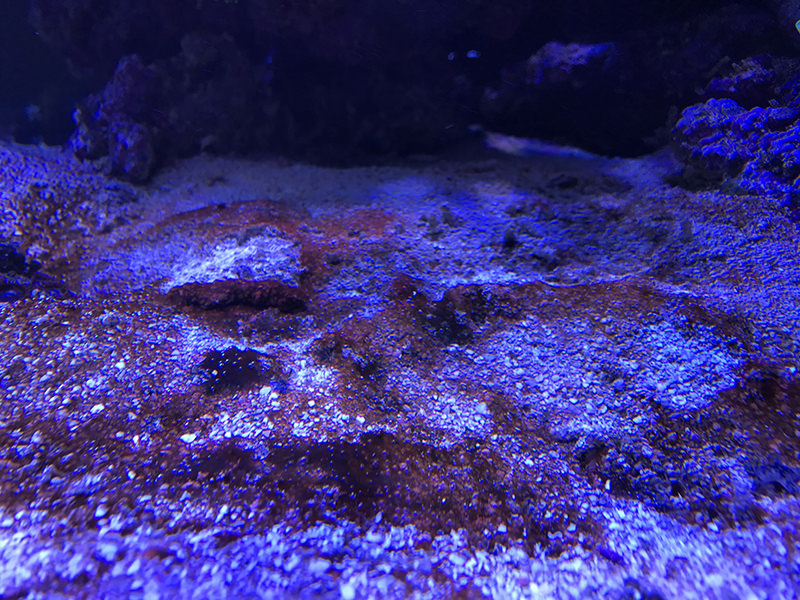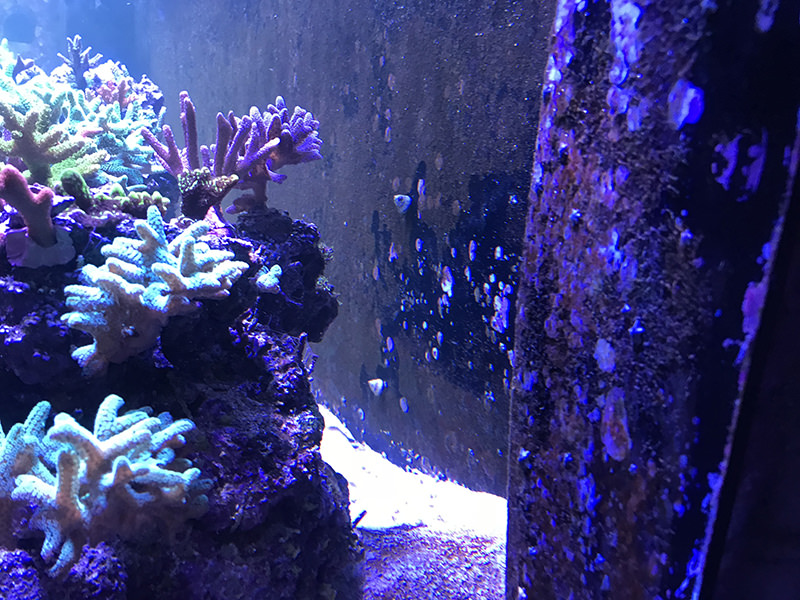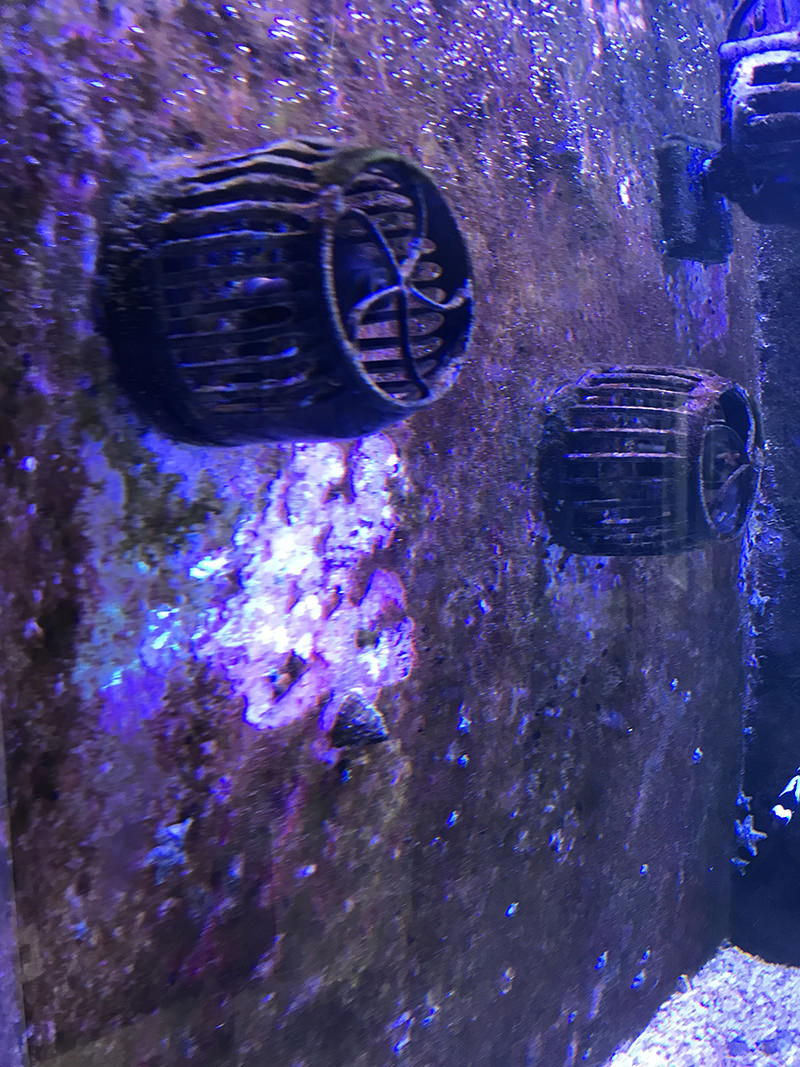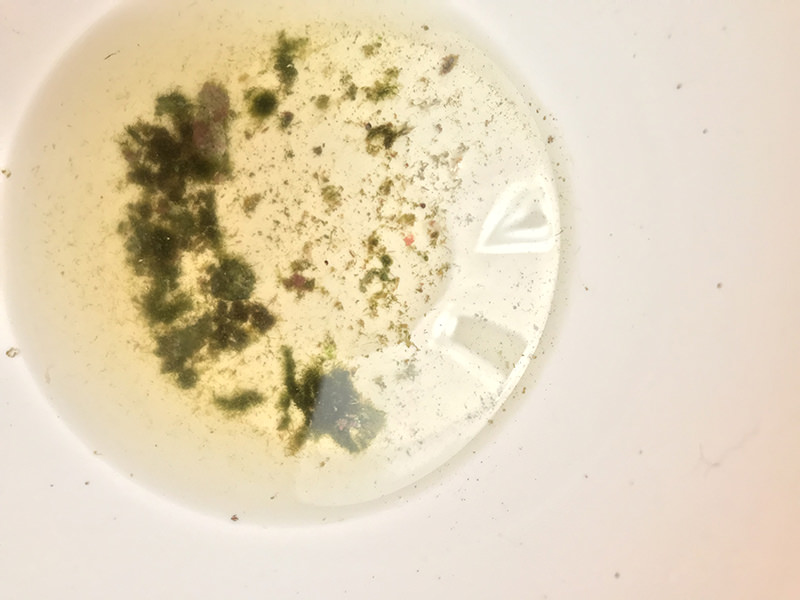
Forms in lower flow areas of sandbend...

Forms on back wall after several days, snails eat it.

More evidence of snails eating it...
My po4 doesn't show up on color test kits and hannah ULR shows 0.01
Follow along with the video below to see how to install our site as a web app on your home screen.
Note: This feature may not be available in some browsers.




Has any of it grown on you acros? Going thru something similar here. Stuff is kinda jelly on the sand and some of my rocks. Also starting to get furry green on the tips of a valid colony and a couple frags.
Hello,
So I have been seeing a lot of info on Dino’s recently. Now to be fair I have not really studied much on this, and honestly after last week my brain is still mush. But, with that being known, do we know how to prevent these in the first place? It seems clear that once the tank gets infected by them, they are a pain to get rid of. Has there been any write ups or test studies done on how to actually prevent them from starting? Knowing they are a common part of marine biology, and some fresh water biology we know it’s part of the ecosystem. However, I would prefer and maybe others would also that it stays out in the ocean. Does anyone know of any case studies, or lab results that show how these start to form. If for example I knew this, I would try and eliminate the sources of an outbreak.
Dino’s usually appear when a tank has bottomed out on no3 and po4 , all other algae is then starved out allowing Dino’s too take over , so too prevent it , try too keep no3 and po4 at reasonable levels , that’s my experience ,Hello,
So I have been seeing a lot of info on Dino’s recently. Now to be fair I have not really studied much on this, and honestly after last week my brain is still mush. But, with that being known, do we know how to prevent these in the first place? It seems clear that once the tank gets infected by them, they are a pain to get rid of. Has there been any write ups or test studies done on how to actually prevent them from starting? Knowing they are a common part of marine biology, and some fresh water biology we know it’s part of the ecosystem. However, I would prefer and maybe others would also that it stays out in the ocean. Does anyone know of any case studies, or lab results that show how these start to form. If for example I knew this, I would try and eliminate the sources of an outbreak.
Has any of it grown on you acros? Going thru something similar here. Stuff is kinda jelly on the sand and some of my rocks. Also starting to get furry green on the tips of a valid colony and a couple frags.
Hello,
So I have been seeing a lot of info on Dino’s recently. Now to be fair I have not really studied much on this, and honestly after last week my brain is still mush. But, with that being known, do we know how to prevent these in the first place? It seems clear that once the tank gets infected by them, they are a pain to get rid of. Has there been any write ups or test studies done on how to actually prevent them from starting? Knowing they are a common part of marine biology, and some fresh water biology we know it's part of the ecosystem. However, I would prefer and maybe others would also that it stays out in the ocean. Does anyone know of any case studies, or lab results that show how these start to form. If for example I knew this, I would try and eliminate the sources of an outbreak.
